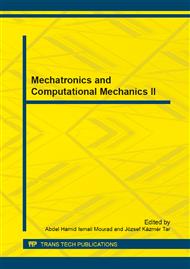p.43
p.49
p.53
p.57
p.65
p.69
p.77
p.81
p.88
Research on the Aero Dynamicity of Steady Wing of Non-Parachute Terminal Sensitive Projectile
Abstract:
The stable wing of non-parachute terminal sensitive projectile (TSP) is a plate wing with two bent angles at edges of the plate wing, thus it looks like an S. Wings of this shape slow the TSP down during its falling process which provides asymmetric forces for it. Then stable scanning motion is realized. This paper established unsteady model of the S wing of the TSP based on CFD/CSD fluid structure interaction (FSI) and analyzed the aerodynamic characteristics of both rigid wing and elastic wing. The results show that the plate which bends towards the windward has the largest deformation. The drag coefficient of the elastic wing is smaller than that of rigid wing at a smaller attack angle while bigger at a larger attack angle. The displacement of S wing increases while the incoming velocity increases and has a tiny interaction relationship with attack angle.
Info:
Periodical:
Pages:
65-68
Citation:
Online since:
February 2014
Authors:
Price:
Сopyright:
© 2014 Trans Tech Publications Ltd. All Rights Reserved
Share:
Citation:


